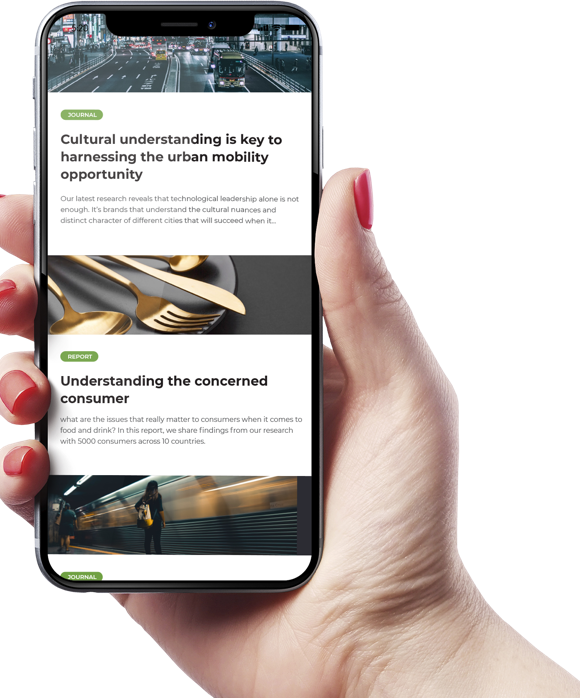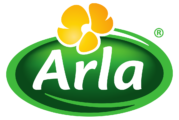Food and beverage giants are scrambling to keep up with shifting consumer demands. Shoppers want healthier ingredients, fair prices – not smaller portions – and full transparency on what they’re buying. With inflation squeezing budgets and a growing backlash against shrinkflation, companies are under pressure to rethink everything from product sizes to formulations or risk losing consumer trust.
PepsiCo’s Q4 2024 numbers tell the story: net revenue dipped 0.2%, with its Frito-Lay (-3%), Quaker Foods (-6%), and beverage (-3%) segments taking hits. In response, the company is pushing portion control and value packs – smaller products positioned as both health-friendly and cost-effective. CEO Ramon Laguarta calls it a ‘highly strategic’ move, but consumers see it differently: is this genuine innovation or just shrinkflation in disguise?
It’s a paradox: consumers want affordability but won’t tolerate shrinkflation. In the US and UK, outrage over downsized products is growing, with brands accused of sneaky pricing tactics. But in Southeast Asia, smaller portions aren’t a scandal – they’re a selling point. Brands that market ‘value packs’ instead of just shrinking products are finding success in price-sensitive markets.
With health concerns, inflation, and shifting regional preferences reshaping consumer priorities, food and beverage brands are in a race to adapt before their loyal customers disappear.
The Health-First Consumer Is Reshaping the Industry
Health-conscious consumers are forcing brands to rethink ingredients, reformulate products, and move away from ultra-processed foods. The COVID-19 pandemic accelerated this shift, with shoppers scrutinizing sugar content, artificial additives, and seed oils more than ever.
A 2024 survey by the International Food Information Council (IFIC) found that 79% of American consumers consider food processing levels when making purchases – up from 66% in 2020. In the UK, supermarkets are cutting back on promotions for high-fat, sugar, and salt (HFSS) products in response to new regulations. Meanwhile, social media scrutiny has exploded, with viral posts slamming seed oils, artificial dyes, and hidden sugars in processed snacks. Food giants have no choice but to adapt – or lose market share.
A Regional Divide in Health Trends
While Western markets are turning against ultra-processed foods, the trend looks different in Southeast Asia. Singapore is leading the charge with government-backed initiatives promoting healthier eating. The Healthier Choice Symbol program and sugar taxes are pushing brands to reformulate products to meet stricter national health standards.
Elsewhere in the region, the health movement is less clear-cut. In Indonesia, Thailand, and Vietnam, demand for functional foods is rising, especially among the urban middle class. But price still rules – health-conscious products must stay affordable. Instead of ditching processed foods, many consumers are opting for fortified options like probiotic dairy or ‘better-for-you’ snacks.
How Food Giants Are Reformulating Products
To keep up, major brands are investing in health-focused innovation. PepsiCo’s $1.2 billion acquisition of Siete Foods – known for grain-free, gluten-free snacks – signals a push into the clean-label movement. Nestlé is betting big on plant-based proteins and dairy alternatives, doubling down on the shift toward natural and functional foods.
As consumer priorities shift, brands are walking a tightrope – balancing taste, affordability, and the rising demand for transparency. The industry is changing fast, and companies that fail to adapt risk becoming irrelevant.
The Inflation Dilemma and the Shrinkflation Backlash
As inflation squeezes household budgets, food and beverage brands are making tough pricing decisions. Some have raised prices outright, while others have turned to shrinkflation – reducing portion sizes while keeping prices the same. But consumers aren’t fooled, and backlash is growing.
A McKinsey report found that over 60% of global consumers now track product sizes and pricing changes. Social media has amplified the frustration, with brands like Cadbury and PepsiCo called out for reducing product weight while keeping prices steady. Toblerone even faced outrage for widening the gaps between its signature chocolate peaks – seen as a sneaky price hike.
The Shrinkflation Paradox
Brands say shrinkflation is necessary to offset rising costs, especially as ingredient prices fluctuate. But the strategy is a double-edged sword:”
- Companies shrink portions to protect profit margins without raising retail prices.
- Consumers notice – and they aren’t happy, seeing it as a hidden price hike.
- Governments are stepping in. France, India, and Malaysia are calling for clearer product labeling to curb deceptive packaging.
In the UK, regulators are pressuring brands to disclose when product sizes shrink. In the US, consumer complaints are mounting, prompting retailers like Walmart to push back against suppliers reducing portion sizes.
A Different Response in Southeast Asia
While Western consumers reject shrinkflation outright, Southeast Asia takes a more practical approach. Price is the priority, and many shoppers accept smaller portions – if they come in value packs or multipack bundles. Instead of quietly shrinking products, brands in the region market smaller portions as cost-saving options.
This strategy fits local preferences. In Indonesia, Thailand, and Vietnam, single-serve and ‘on-the-go’ formats are booming, especially among younger consumers looking for affordable convenience. Nestlé and Mondelez have responded with mini packs of popular snacks, marketing them as budget-friendly rather than sneaky price hikes.
Turning Shrinkflation Into a Marketing Strategy
To counter backlash, some brands are spinning shrinkflation as a health-conscious choice. PepsiCo markets its smaller snack packs as ‘portion control’ options, framing them as a wellness move rather than a cost-cutting tactic. Coca-Cola’s mini-cans follow the same playbook, targeting health-conscious consumers instead of budget-conscious ones.
With inflation squeezing both companies and consumers, the pricing battle is far from over. Whether through transparency, portion control, or government intervention, food brands must strike a balance between affordability and trust – or risk losing loyalty.
The Rise of Portion Control as a Market Strategy
Portion control is no longer just a diet trend – it’s now a core strategy for food and beverage brands adapting to shifting health and economic pressures. Once a niche tactic for calorie-conscious consumers, it has gone mainstream, fueled by rising obesity concerns and the growing influence of GLP-1 weight-loss drugs like Ozempic
A Morgan Stanley report estimates that GLP-1 drugs could cut US calorie consumption by up to 10% in the coming years, as users eat less and prefer smaller portions. Food brands are already adapting, rolling out smaller servings, reformulated products, and snack-size options to match changing eating habits.
Regional Differences in Portion Control
Portion control is a global trend, but how it’s marketed differs by region:
- In the US and UK, brands are positioning smaller portions as a tool for calorie management and weight control. Products like Coca-Cola’s 7.5-ounce mini-cans and Mondelez’s reduced-size snack packs cater to consumers who are actively trying to reduce sugar and calorie intake.
- In Southeast Asia, portion control is about value, not dieting. Budget-conscious consumers in Indonesia, Thailand, and Vietnam prefer multipacks and individually wrapped servings for controlled spending and convenience. Nestlé and Unilever have leaned into this, marketing smaller products as cost-effective solutions, especially in cities where disposable income is tight.
PepsiCo’s Portion Control Playbook
PepsiCo is leading the charge on portion control. With sales slipping across its Frito-Lay, Quaker Foods, and beverage segments, the company has doubled down on single-serve and multipack options, marketing them as both healthier and budget-friendly.
CEO Ramon Laguarta calls portion control a long-term strategy, not just a response to economic pressures. By rolling out smaller Lay’s chip bags, Gatorade bottles, and Quaker oat packs, PepsiCo hopes to keep customers loyal while adjusting to changing eating habits.
Portion control is no longer just a diet trend – it’s now a core business strategy. Whether sold as a health-conscious move or a cost-saving measure, it’s here to stay. The shift is reshaping how food brands market and package products in an age of rising health awareness and economic caution.
Southeast Asia’s Unique Consumer Trends and Responses
In the West, portion control is about calories. In Southeast Asia, it’s about cost. Price sensitivity still dominates, but demand for healthier, premium products is rising. That leaves brands walking a fine line – balancing affordability for the mass market with high-quality options for urban consumers willing to pay more.
A Dual Consumer Base: Price-Conscious vs. Health-Focused
In Indonesia, Thailand, and Vietnam, affordability still drives purchases, with consumers favoring cost-effective, single-serve options over bulk buys. But a rising middle class and exposure to global health trends are boosting demand for fortified foods, local superfoods, and functional drinks.
In Singapore, where consumer preferences lean heavily toward health-conscious choices, government initiatives are further shaping the industry. The city-state’s Nutri-Grade labeling system, which categorizes beverages based on sugar and saturated fat content, has pushed brands to reformulate drinks to avoid lower-grade ratings. According to Nielsen’s Southeast Asia Consumer Trends Report, demand for low-sugar and naturally sweetened beverages has surged in urban centers, reflecting a broader shift toward mindful consumption.
A Growing Preference for Local and Natural Ingredients
While Western markets focus on plant-based and protein-enriched foods, Southeast Asian consumers favor traditional, natural ingredients. Products with pandan, coconut sugar, turmeric, and herbal infusions are gaining ground, seen as both functional and culturally familiar.
Brands are taking note and adjusting their portfolios:
- Nestlé has expanded its fortified dairy and cereal lines, adding local flavors to appeal to Southeast Asian tastes.
- Unilever has reengineered its ice cream portfolio, developing lower-sugar and plant-based alternatives specifically for the region.
- PepsiCo has reformulated Quaker Oats, using local grains and flavors to appeal to Southeast Asian consumers..
Regulation-Driven Reformulations
Governments in the region are shaping food trends. Beyond Singapore’s Nutri-Grade system, Malaysia and Thailand have taxed sugary drinks, pushing brands to cut sugar and create healthier alternatives.
Winning in Southeast Asia means going hyper-local – balancing affordability, tradition, and innovation. With urban consumers embracing healthier choices, brands that navigate these demands will be best positioned to thrive.
The Future of Food and Beverage Brands in a Changing Market
Consumer preferences aren’t just influencing the food industry – they’re reshaping it. Legacy brands are scrambling to keep up, forced to balance health-conscious reformulations, affordability, and regional differences while dodging the backlash against shrinkflation – all without sacrificing profits.
The era of mass-market, one-size-fits-all food is ending. Consumers from New York to Singapore are scrutinizing labels, rejecting artificial additives, and demanding transparency. Clean-label products – those with simple, recognizable ingredients – are now a $180 billion industry, and Innova Market Insights expects them to keep growing at double-digit rates.
A New Era of Food Innovation
The next wave of food innovation is here. Functional foods, alternative proteins, and sustainable ingredients are no longer niche – they’re mainstream. Nestlé and Unilever are expanding plant-based dairy, while startups push lab-grown proteins and allergen-free snacks.
Pricing strategies are shifting. Shrinkflation backlash has forced brands to rethink how they price and package products. Instead of sneaky downsizing, companies are testing tiered packaging – premium, mid-tier, and value options – to cater to different buyers. Coca-Cola’s mini-cans and PepsiCo’s single-serve packs prove that portion size is becoming a choice, not a trick.
Who Will Win the Consumer Loyalty Battle?
Can legacy brands adapt, or will disruptors take their place? History shows big players can evolve – McDonald’s revamped its menu for the health-conscious, and PepsiCo is pivoting to cleaner, portion-controlled products. But the game has changed. Consumers have more choices, more information, and more power than ever.
The winners will be the brands that listen, adapt, and innovate – not just react. The losers? They risk becoming relics of an industry that couldn’t keep up.
Kadence is a global market research firm helping food and beverage brands decode consumer behavior, price sensitivity, and taste preferences. If you want to understand how packaging changes impact demand – and what drives buyers’ choices – reach out to us.
Get regular insights
Keep up to date with the latest insights from our research as well as all our company news in our free monthly newsletter.





 Senior Marketing Executive
Senior Marketing Executive Sales & Marketing
Sales & Marketing General Manager PR -Internal Communications & Government Affairs
General Manager PR -Internal Communications & Government Affairs Vital Strategies
Vital Strategies
 Customer Intelligence Director
Customer Intelligence Director